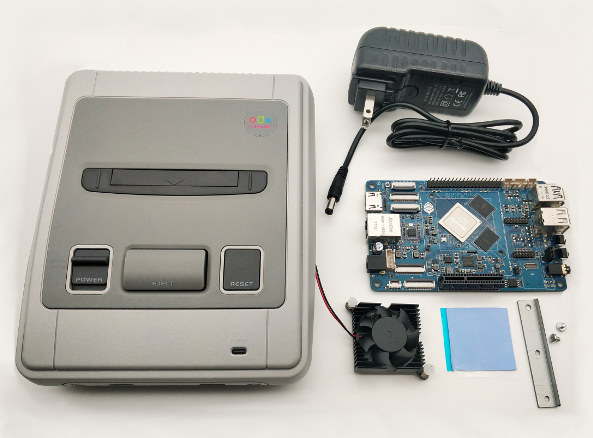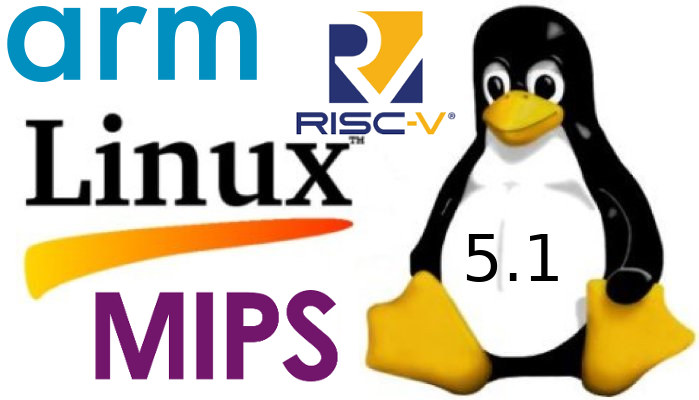While the Raspberry Pi boards are mostly promoted as tools to teach STEM to kids and adults alike, they have found their way in a fair amount of industrial products, including ModBerry M500 industrial computer, Janz Tec emPC-A/RPI3 industrial embedded controller, and Kunbus RevolutionPi RevPi Core among others. There’s yet another option with Brainboxes BB-400 Neuron Edge industrial controller that was announced last year with Raspberry Pi Compute Module 3, but recently got an upgrade to Raspberry Pi Compute Module 3+. The controller features two Ethernet ports and also includes an Arduino compatible microcontroller to control the system’s eight configurable digital inputs and outputs. BB-400 Neuron Edge industrial controller specifications: SoM – Raspberry Pi Compute Module 3+ with Broadcom BCM2837B0 quad-core , Cortex-A53 processor @ 1.2GHz, 1 GB LPDDR2, 32GB eMMC Flash storage MCU – Unnamed Microchip Atmel Arduino compatible microcontroller Connectivity Ethernet Uplink Port – 1x RJ45 jack, 10/100Mbps […]
$40 Elecrow 5″ HDMI Raspberry Pi Display Features Backlight Control, a Resistive Touch Panel
There are plenty of small touch screen displays for Raspberry Pi board, including the official 7″ display that connects to the board’s MIPI DSI connector. Some people may prefer getting a small HDMI display however, as it can be used with most devices with an HDMI input port, and the touch screen function may be achieved over USB, I2C or SPI depending on the design. Elecrow has just launched a new 5″ HDMI display with resistive touch screen designed for the Raspberry Pi boards, and whose main feature is to support backlight control over GPIO 11 in order to lower power consumption according to the announcement tweet from the company. Specifications for RPD19048A display: Screen – 5″ TFT resistive touch screen display with 800×480 resolution @ 60 Hz; LCD Driver IC – Display Future ILI9486L (Likely wrong as this only supports 480×320 resolution) Touch controller – XPT2046 4-wire resistive […]
Roshambo Retro Gaming Console Kit Features Rock64 or RockPro64 Board
Recalbox, Lakka TV, Retro Arena, and Batocera are some of the retro gaming distributions optimized to run on development boards. You can install those by yourself, and enclose the board is any case, but if you want something more fancy, Cloud Media is now selling Roshambo retro gaming kit based on Rock64 (RK3328) or RockPro64 (RK3399) SBC’s. Roshambo and RoshamboPro retro gaming kits are compatible with respectively Rock64 and RockPro64 boards, come with a shell with carrier board, power supply, cooling fan (Pro model only) and support cables. The kits support 256GB or 512GB SSD cartridges provided by the company, and optional game controllers with analog triggers and buttons are also available for purchase. Pine64 Rock64 / RockPro64 boards are compatible with Recalbox, Lakka TV, Retro Arena, and Batocera distributions, but bear in mind ROMs are not provided, so you’d have to install your own, or play free games only. […]
Linux 5.1 Release – Main Changes, Arm, MIPS & RISC-V Architectures
Linus Torvalds has just announced the release of Linux 5.1: So it’s a bit later in the day than I usually do this, just because I was waffling about the release. Partly because I got some small pull requests today, but mostly just because I wasn’t looking forward to the timing of this upcoming 5.2 merge window. But the last-minute pull requests really weren’t big enough to justify delaying things over, and hopefully the merge window timing won’t be all that painful either. I just happen to have the college graduation of my oldest happen right smack dab in the middle of the upcoming merge window, so I might be effectively offline for a few days there. If worst comes to worst, I’ll extend it to make it all work, but I don’t think it will be needed. Anyway, on to 5.1 itself. The past week has been pretty calm, […]
Giggle Score Says ODROID-N2 Best Value, Raspberry Pi Zero Worst Value
[Update May 7, 2019: Giggle Score has been updated to use 7-zip to benchmark the boards instead of sysbench, and the “best value” rankings are now quite different] People like to compare single board computers, and usually want to have a simple answer as to which is better than the others. But in practice it’s impossible, because the beauty of SBCs is that they are so versatile and can be used in a wide variety of project, and that means in some cases the “best board” may be completely useless to you since it lacks a critical feature and interface for YOUR project be it H.265 video encoding or a MIPI DSI display interface. Still, it’s still always fun to look at benchmark scores and trying to compare SBCs, and for projects that mostly require CPU processing power it may also be useful. Robbie Ferguson has been developing and maintaining […]
Novasom M7 SBC aims to be a Drop-In Replacement for Raspberry Pi 3 in Industrial Projects
Raspberry Pi boards are great for education and hobbyist projects, and while they are also found in industrial projects, they may not be the ideal solution for such commercial projects because of potential availability issues, stability issues in demanding environments, lack of certifications, and lack of commercial support. Novasom RASPMOOD family of SBCs aims to provide a drop-in replacement for Raspberry Pi based designs by providing mechanically and electrically compatible boards, as well as a software layer that allows the RASPMOOD boards to leverage the software you’ve already developed for your Raspberry Pi 3 design. Today we’ll specifically look at Novasom M7 “RASPMOOD” board – aka SBC-M7 – powered by a Rockchip RK3328 processor. Specifications: SoC – Rockchip RK3328 quad core Cortex-A53 processor with Mali-450MP4 GPU System Memory – Up to 4 GB DDR3 RAM Storage – Up to 256 GB eMMC Flash + uSD slot Video Output – HDMI […]
ConBee II ZigBee USB Gateway Dongle and Phoscon Gateway
Dresden-Elektronik has released a new ZigBee USB dongle/stick called ConBee II (a.k.a. ConBee 2) as a direct replacement the first-generation version, as well as the new Phoscon Gateway Raspberry Pi based Zigbee Hub. Beside new Zigbee hardware, the company has also released a new version of deCONZ graphical user interface used to set up and control any ZigBee network without any programming, as well as a new corresponding “Phoscon App” mobile app for home automation control. ConBee II Zigbee USB dongle The new “ConBee II” ZigBee USB dongle/stick features improved signal amplifier with longer radio range, and is based on a 32-bit Arm Cortex-M0 microcontroller (Microchip ATSAMR21E18A) instead of an 8-bit AVR based MCU. Key features: Connectivity – 2.4 GHz Zigbee USB Gateway Compatibility Philips Hue, IKEA Trådfri, OSRAM Lightify, XIAOMI Aqara and many other Zigbee items Zigbee Home Automation, Zigbee Light Link, Zigbee 3.0 Dimensions – 60 x 18 […]
Getting Started with balenaFin Developer Kit, balenaOS and balenaCloud
balena Fin is a carrier board for Raspberry Pi Compute Module 3/3+ designed specifically for industrial applications leveraging fleet management services provided by Balena. I received balenaFin developer kit last month, and in the first part of the reviewed shows how to assemble the kit. I’m now had time to spend more time with the kit, as well as BalenaOS Linux based operating system optimized for running Docker containers on embedded devices, and balenaCloud services to manage a fleet of devices from a web dashboard. I’ve mostly followed the instructions in the getting started guides here and there, and will document what I had to do to prepare the image, flash it to the board, and load a sample docker application locally, and through balenaCloud. Downloading and Configuring BalenaOS for balena Fin You’ll find BalenaOS in the download page. While we are using hardware based on a Raspberry Pi Compute […]










